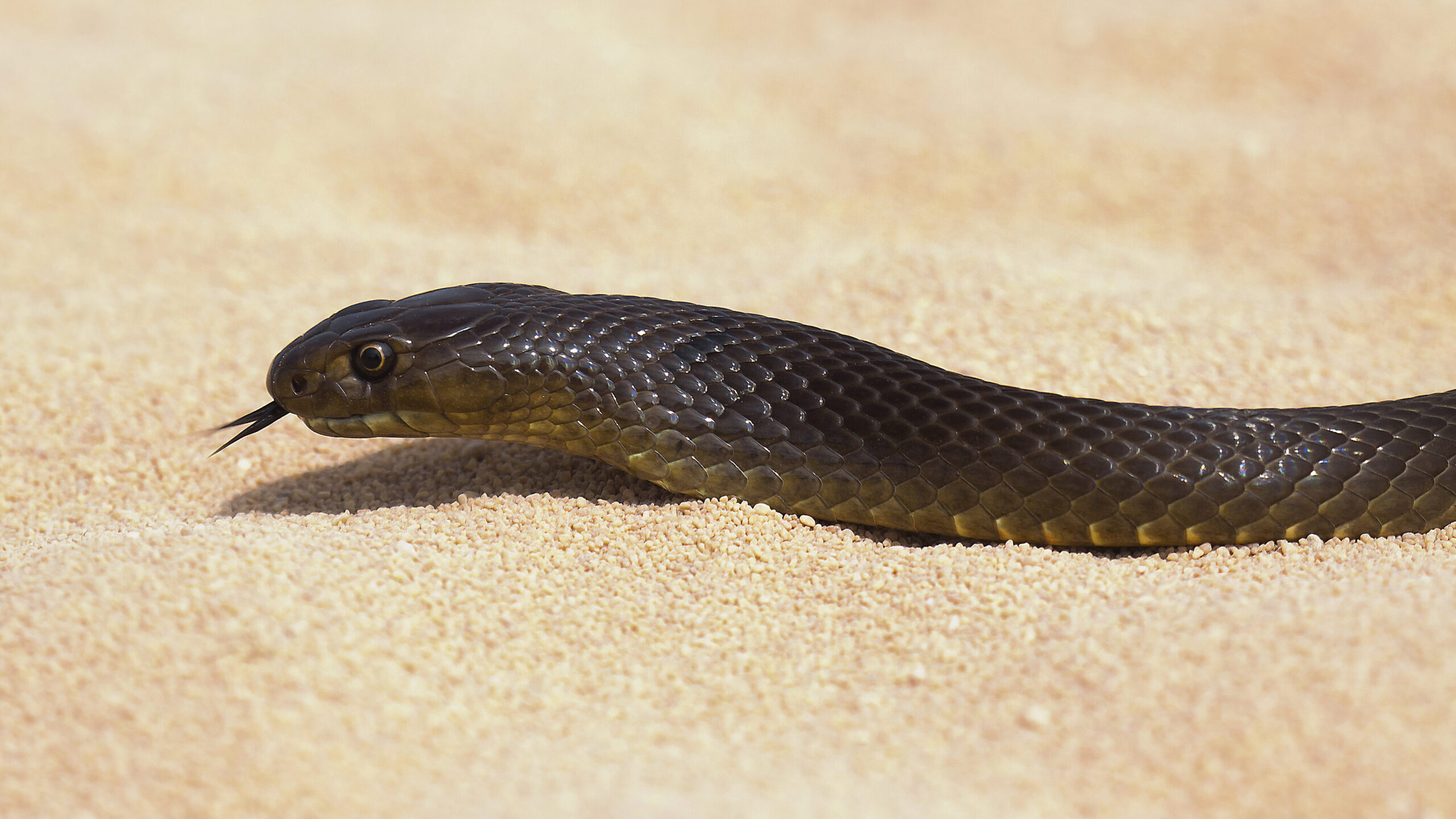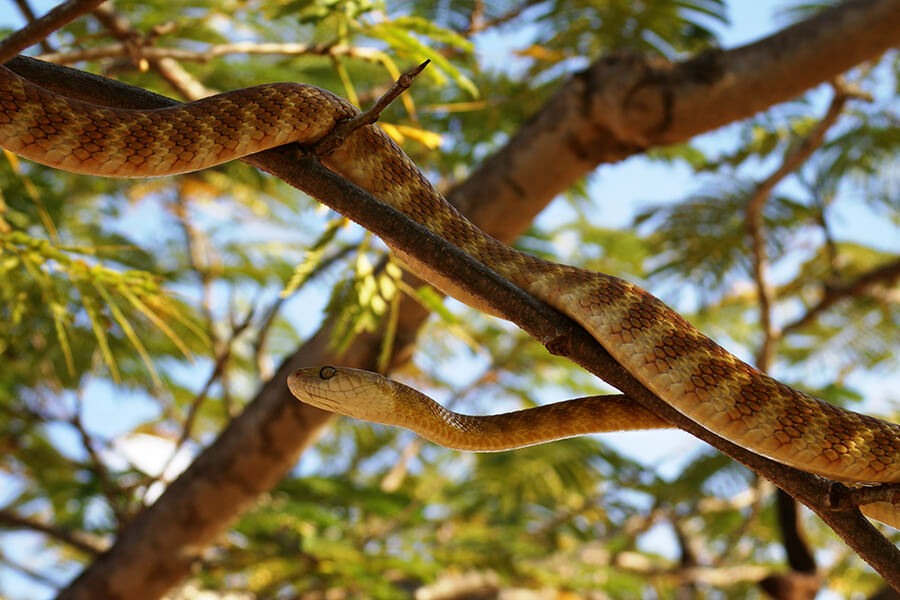Introduction
Australia, a land of varied wild animals, is home to several interesting creatures, consisting of serpents that can inspire both admiration and concern. Amongst these snakes is the tiger serpent, recognized for its striking appearance and credibility as a poisonous predator. Because of this, one inquiry often occurs: Are tiger snakes venomous? This article will certainly delve into the misconceptions and truths surrounding tiger snakes, their habitat, habits, medical ramifications of their bites, and much more.
Are Tiger Snakes Venomous?
When it pertains to the question of whether tiger serpents are Venom spread restriction poisonous, the solution is a resounding yes. Tiger serpents (Notechis scutatus) are certainly venomous and ranking among the most harmful serpents in Australia. Their venom includes powerful neurotoxins that can bring about paralysis and even death otherwise dealt with without delay.
While casualties from tiger snake attacks have become less usual as a result of improvements in clinical therapy and antivenom accessibility, this does not lessen the demand for caution when encountering these reptiles. The possible results of a tiger serpent bite consist of serious discomfort at the site of the bite, swelling, nausea or vomiting, problem breathing, and neurological signs such as weakness or paralysis.
Types of Tiger Snakes
In Australia, there are a number of identified subspecies of tiger snakes:
- Eastern Tiger Snake (Notechis scutatus): Located mainly in southeastern Australia. Tasmanian Tiger Snake (Notechis scutatus): A subspecies found just in Tasmania. Black Tiger Snake: Recognized for its darker coloration.
Each of these varieties has variations in dimension and behavior but shares similar poison characteristics.
The Habitat of Tiger Snakes
Where Do They Live?
Tiger serpents are adaptable creatures discovered throughout numerous habitats throughout Australia. They generally live in coastal regions but can additionally be located in wetlands, swamps, waterfronts, and woodlands. Their preference for moisture-rich environments makes them skilled swimmers; hence they prosper near water bodies like lakes or marshes.
Geographical Distribution
- Southeastern Coast: Home to Eastern tiger snakes. Tasmania: Dominated by Tasmanian tiger snakes. Northern Regions: Where you may experience much less frequently seen variants.
Habitat Preferences
Tiger snakes favor locations with plentiful cover where they can hide from killers while hunting for victim. They frequently search tiny mammals, frogs, birds, and even fish-- making them flexible seekers within their ecological niche.
The Makeup of a Tiger Snake
Physical Characteristics
Tiger snakes have distinctive physical traits that distinguish them from other Australian reptiles:
- Coloration: Generally grouped with yellow or light-colored red stripes on a dark background. Size: They can grow up to 2 meters long; however, typical sizes vary in between 1.2 to 1.5 meters.
The unique coloration offers both as camouflage versus predators and while stalking target in their all-natural habitat.
Behavioral Traits
Understanding the behavior patterns of tiger serpents is crucial for those living within their geographical array:
- Nocturnal Activity: They are primarily active during the night but may likewise quest during the day. Defensive Behavior: When threatened, tiger serpents might hiss noisally or flatten their bodies-- an indication indicating they feel cornered.
Tiger Snake Bite Symptoms
If bitten by a tiger serpent, people ought to watch for specific symptoms that materialize soon after:
Severe local pain Swelling around the bite area Nausea or vomiting Difficulty breathing Neurological symptoms such as muscle mass weaknessIt's critical never ever to ignore these indicators; immediate clinical focus is crucial complying with any type of serpent bite incident.
First Help for Serpent Bites
Immediate Actions After a Bite
Knowing exactly how to respond promptly can conserve lives when dealing with potential serpent bites:
Stay calmness and still-- activity increases poison spread. Call emergency situation services immediately. Keep the affected arm or leg incapacitated below heart level. Avoid cutting or sucking out poison; this old spouses' story can aggravate conditions. Remove tight apparel or precious jewelry near the bite site.First Help Kit Fundamentals for Snake Bites
A well-stocked emergency treatment package must consist of items especially valuable in dealing with serpent bites:


|Item|Function|| --------------------------------|-----------------------------------------------|| Sterile plasters|To cover injuries|| Antiseptic wipes|To clean around bite area|| Emergency get in touch with numbers|For quick gain access to during emergencies|| Compression bandage|To help immobilize influenced limb|
Proper preparation can make all the difference when an emergency strikes.
Fact vs Myth Regarding Tiger Snakes
Myth 1: All Snakes Are Aggressive
Contrary to common belief, not all snake types exhibit aggression towards human beings. In fact, many prefer to pull back than face us.
Myth 2: A Bite Constantly Causes Death
While fatal bites do happen-- many thanks greatly to postponed healthcare-- the majority of bites are non-fatal if dealt with promptly with antivenom.
Myth 3: You Can Suck Out Venom
This extensively held belief is false; attempting to suck out poison only increases difficulties rather than minimizing them!
FAQs
1. Are child tiger snakes a lot more harmful than adults?
Baby tiger snakes might have much less venom than adults yet typically supply bites readily as a result of being even more frightened.
2. How much time does it take for signs and symptoms to appear after a bite?
Symptoms usually appear within mins but can sometimes take hours depending on factors like specific health and wellness conditions.
3. What should I do if I see a tiger snake?
Maintain range! Stay clear of provoking it; most encounters end without case if you value their Camouflage in Australian snakes space.
4. Exists an antivenom offered for tiger snake bites?
Yes! Antivenom exists specifically developed for treating ailments brought on by tiger serpent bites-- it's important to look for specialist clinical assistance immediately!
5. Can I keep a tiger snake as a pet?
Keeping any wild serpent types presents substantial risks due primarily to their reproduction eastern brown snake baby behaviors & & dietary requirements-- it's ideal left in nature!

6. Just how common are serpent attacks in Australia?
Australia sees countless snakebite instances yearly; however fatalities have actually lowered dramatically thanks mostly due improved awareness & & health care access!
Conclusion
In final thought, understanding whether "Are Tiger Snakes Venomous?" brings substantial effects for individual security when communicating with these remarkable reptiles belonging to Australia's diverse ecosystems can not be overemphasized!
Arming ourselves with knowledge about these animals-- from their environments and actions down through efficient first aid practices-- equips us towards safer coexistence alongside wild animals while mitigating risks related to unintended encounters!
By cultivating education concerning our atmosphere's complexities-- not simply focusing entirely on concern-- we pave paths towards better recognition & & conservation initiatives profiting both mankind & & nature alike!